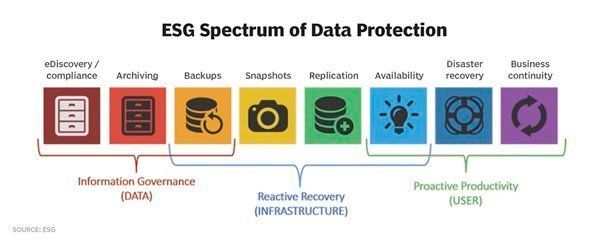Anyone who truly requires long-term data retention probably already understands the realities of what modern tape offers — and not the marketing fear, uncertainty and doubt from 20 years ago. Which is why, with its speed, error-protection, durability, functionality (e.g., Linear Tape File System) and economics, tape continues to earn a place in the enterprise data protection strategy of a majority of organizations today.
Meanwhile, just because an organization doesn’t buy into the fear, uncertainty and doubt (FUD) of times past regarding tape doesn’t mean that it fully understands how best to use tape or other backup and archive media, such as disk or cloud. So please stop presuming backups go to disk and archives go to tape. That may be the combination you’ve chosen, but that’s just you. Which storage medium you choose depends on the specific goals you are trying to accomplish in your enterprise data protection strategy and the IT infrastructure you’ve got in place.
Backup, archive and the data protection spectrum
Backups and archives are similar, but are two very different IT processes that are done for very different reasons.
A backup is a copy of a data container (volume, directory, database, whatever). It is typically optimized to retain multiple previous versions of data in preparation for restoration to an earlier version or point in time.
An archive, by contrast, is the intentional preservation of data, usually a minority subset of your overall data set. Archives are based on the business value of the data, and are often motivated by some kind of regulatory or operational mandate to retain that data for an extended period of time.
At ESG, we think of each of these — backup and archive — as parts of a broader enterprise data protection strategy that also includes snapshots,replication, availability and so on. (See: “ESG Spectrum of Data Protection”).

What the numbers say
For the same reasons that different folks will send their backups to disk, cloud or tape as part of their enterprise data protection strategy — an archive can also go to disk, cloud or tape. In ESG’s recent “Long Term Retention” research, we looked at several performance characteristics of modern archival products:
- Over half (51%) of organizations move data into their archival product on at least a daily basis.
- Two out of five (41%) organizations retrieve data on at least a daily basis, with another fourth (23%) retrieving data multiple times throughout the week.
- Four out of five (80%) pieces of data retrieved are two years old or less.
- Over one-third (37%) of data retrieved is less than a gigabyte, with another third (34%) less than 100 GB.
- And two-thirds of folks expect to retrieve that data in minutes. In fact, one in five (19%) expect to retrieve the data within seconds!
Everything described here fits modern tape usage, but also fits moderndeduplicated disk and some cloud products — and that is the point. Well, one of two points, actually:
- Stop interchanging backup and archive behaviors, unless your data protection product actually does both — creating copies for restoration preparation and archives for long-term data preservation.
- Choose the right media combinations for your backups and archives based on the agility you need (which will often point to disk) and the characteristics of what you require in long-term retention (which will likely point you to tape and/or cloud).
In fact, by the time you look at the broader data protection spectrum again and at what your business units require in cost-effective and flexible data management, you’ll likely need disk, cloud and tape to accomplish the goals of your enterprise data protection strategy — and that is okay, really.
[Originally posted on TechTarget as a recurring columnist]